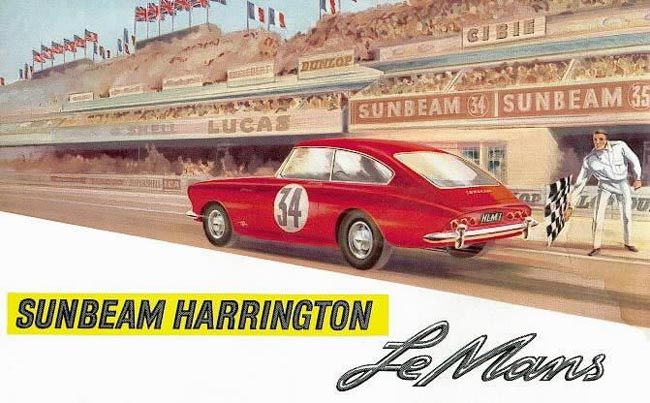
Harrington Le Mans: Sunbeam’s Lovely Gran Turismo
Moss on Sunbeams
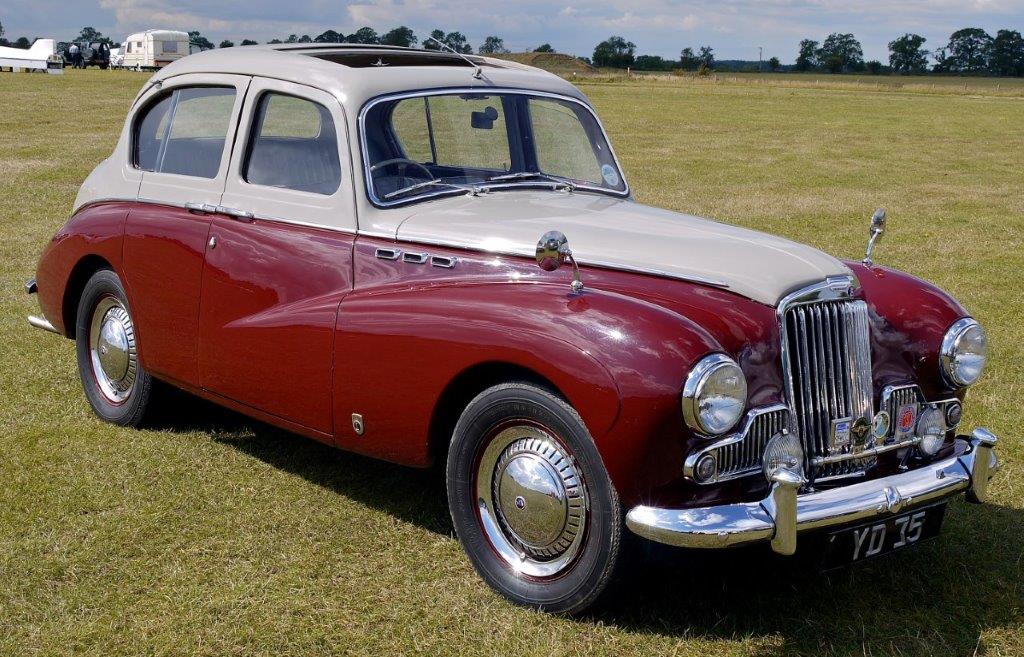
Sunbeam-Talbot had a good competition pedigree before the Second World War. But the firm was bought by the Rootes Group in 1935, and not much happened for awhile.
In 1952, Stirling Moss finished second in a Sunbeam-Talbot 90 in the Monte Carlo Rally—the high point that decade.
“You wouldn’t believe how slow my Sunbeams were,” Sir Stirling later told my friend, motoring writer Graham Robson. “Yes I would!” Graham replied.
Arrival of the Sunbeam Alpine sports car in 1959 made competition worth considering. Rootes competitions manager Norman Garrad had the idea that they could win something at the classic Twenty-four Hours of Le Mans endurance race.
The French organizers offered special prizes for very specific achievements, so that French cars and drivers could shine in a field dominated by the likes of Ferrari and Maserati. One of these was the “Index of Thermal Efficiency”—basically the best gas mileage.
No, I’m not kidding. You won it by racing flat out for 24 hours while getting over 20 miles per gallon. This sounds silly, but a win at Le Mans—for any reason—is a big deal. Mind you, to win, a car has to finish this grueling overnight endurance race.
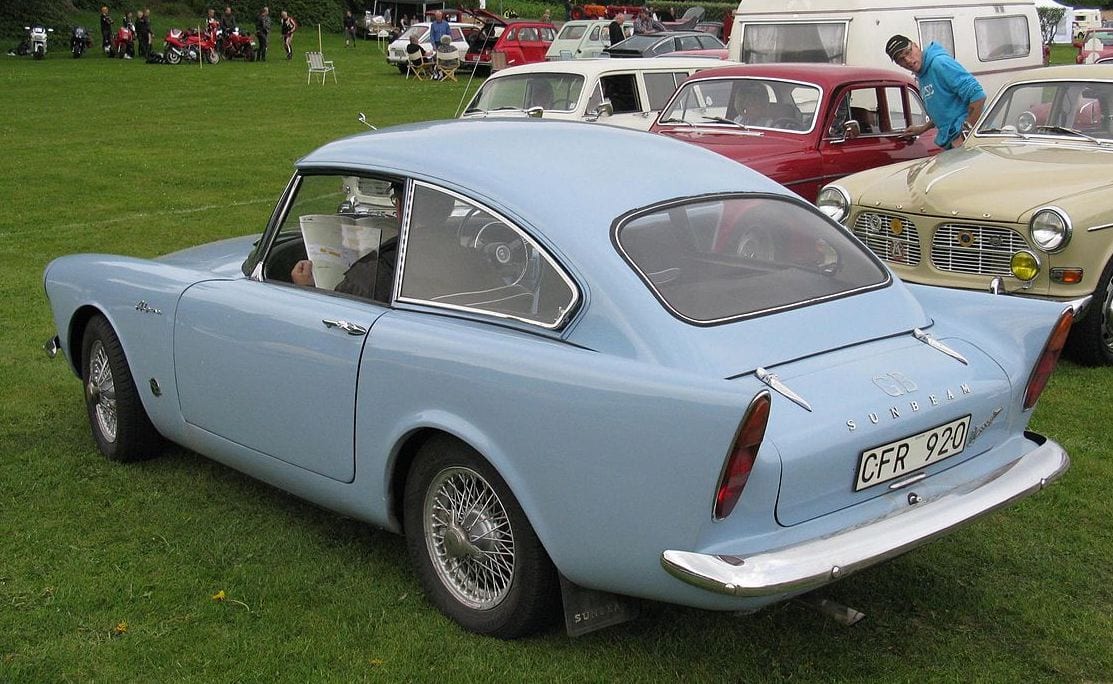
“Babes in toyland”
Garrad knew Sunbeams weren’t fast enough to win Le Mans outright. But properly streamlined, maybe one could win the Efficiency Index. So he contracted with the old Sussex coachbuilder, Thomas Harrington Ltd., to build a gran turismo “Harrington Alpine.”
It had a tuned engine, a fastback body and a shielded undercarriage to minimize drag. Off it went with a second Alpine and a trailer full of parts, towed by a Humber Super Snipe to race at Le Mans. Rootes had never been there before. It was a case of “babes in toyland.”
“Clockwork mouse”
To everybody’s astonishment, the Harrington Alpine was just the ticket. The drivers were Sunbeam veterans Peter Harper and Peter Procter. “It circulated like a clockwork mouse,” Norman’s son Lewis remembered:
The drivers were used to rallying, so they were not out to break any speed records—just putting in very routine, regular laps. If you told Peter Procter to drive down the M1 motorway at 30 mph, he’d do it!
At nine the next morning, with three hours to go, a French organizer told us that if we souped up our car a little, we’d beat Porsche for the Efficiency Index. Great delight! We ran up a sign that said +500 REVS TO BEAT X. Sure enough, up came 500 rpm. Peter, of course, was very disciplined. The car just kept going round and round. We couldn’t believe it! It gave us no trouble at all.
Thus Sunbeam won the 1961 Le Mans Index of Thermal Efficiency, averaging 91 mph and 20+ mpg.
The fable of Judith’s tights
The whimsical story gets droller yet when we recall the second Le Mans Sunbeam—a stock Alpine hardtop, driven by Peter Jopp and Paddy Hopkirk. While the Harrington coupe circled the track flawlessly, this second car was soon in the pits with a failed main bearing. The pit crew scrambled to tear in and fix it. Lewis Garrad remembered:
Judith Jackson, Peter Jopp’s girlfriend, was our interpreter. In her best French, she asked the authorities if we could change the oil, since we had to take the sump off to put in a new main bearing.
No, they said, we hadn’t done enough laps to qualify for an oil change! Judith and the French had a right old harangue, with lots of arm-waving and all that.
What to do? “We used the old oil, of course,” Lewis laughed. “We had to filter it, so we used one of Judith’s panty hose!”
This went down jolly well in my book, Tiger Alpine Rapier (1981). Until Judith Jackson (no mean driver and auto writer herself) happened to read it. “That’s all wrong,” she wrote me. “Lewis is misremembering. I did not remove my tights!”
I apologized and promised to remove her tights in the first reprint, if there was one. Alas not, though some pirate reprinted the book in the clandestine publishing underground years later.
Ambitions whetted, Thomas Harrington Ltd. commissioned designer Ron Humphries to create a more fully integrated gran turismo, the 1962 Harrington Le Mans. By comparison to the original, it was a stunner. Two were entered for Le Mans ’62. Both finished, Harper/Procter covering 50 more miles than in 1961. But a Lotus Elite beat them to the Efficiency trophy.
Harrington eventually built about 250 “production” Le Mans models. And that was how I met one.
Harrington Le Mans: first encounter
It was in 1963 at Beckrag Motors in Irvington, New Jersey. I was there to buy a bolt-on hardtop for my Sunbeam Alpine. A new Harrington Le Mans was in their showroom—Carnival red, enticingly shaped. It had wire wheels, Microcell bucket seats, and a dashboard made from a real tree. Gorgeous! It looked like 100 mph just standing still. The price was $4295—about $3000 more than I could even borrow. I had to stick with my hardtop Alpine.
It may have won a gong at Le Mans, but snobs regarded the Harrington as a kind of blacksmith’s revenge, cobbled up to suit. There were several such conversions back then. The Triumph Herald-based Bond Equipe was similar, but rather less impressive.
Still, Thomas Harrington Ltd. knew a few things about custom bodies. And Ron Humphries made the Le Mans look like a ground-up design.
The ’59 Alpine had been designed for the Rootes Group by Raymond Loewy Associates—a “civilized” sports car with roll-up windows and fashionable tailfins. For his second Harrington coupe in 1962, Humphries shaved the fins and deck and applied a fiberglass fastback. It clamped onto the stock windscreen and ran back to a Kamm-like tail, sandwiched onto the metal body. Out back, it was held on by a bolt that could have come from the Golden Gate Bridge.
There was a hatchback backlight, a svelte interior, swing-out rear windows and “Le Mans” lettering. A slim strip of bodyside brightwork actually hid the seam where fiberglass met steel. I loved every inch of it—just the kind of oddball rig that excited a car nut.
Owning a Harrington
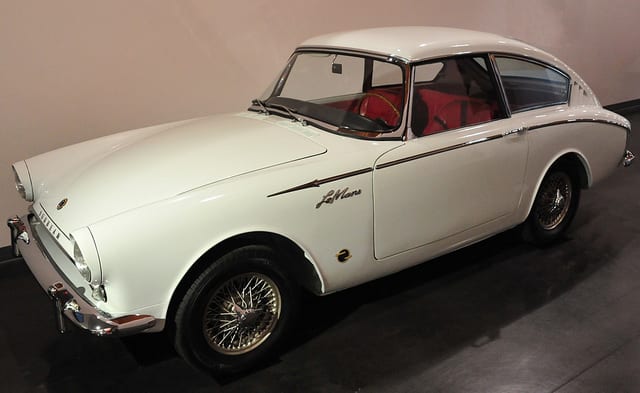
In the 1980s I owned a white Le Mans, in pretty good shape, too. I road-tested it for Special-Interest Autos, August 1983.) Consumed with enthusiasm, I started a “Harrington Register” to track survivors.
We published two or three editions of a newsletter called the Harrington Harangue. But my Le Mans was a bucket of bolts in need of restoration. Other projects intervened and I let it go. If it’s still out there, the serial number is #6413. (No 17-digit VINs in those days.)
Harrington went on to build two more versions of the coupe, called the Series C and Series D (though the previous two never carried a series designation). These, like the first version, were mainly based on the tailfinned Alpine “Series 3” (through 1964). At least one Series D carried V8 Sunbeam Tiger specifications: the ultimate Harrington.
The Harrington Society
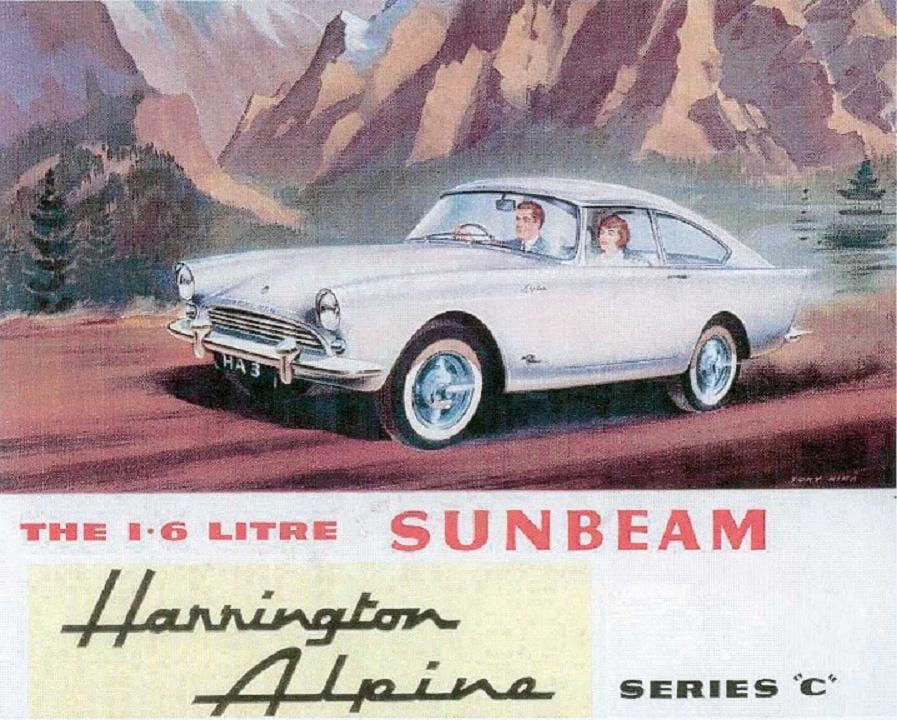
In the Internet Age, past sins come back to haunt you. Imagine my surprise to hear via this website from Jan Iggbom, a retired Swedish Air Force officer and, since 1969, a Harrington owner.
Jan owns the only Le Mans sold new in Sweden. Together with Ian Spencer in the USA, Iggbom created a Harrington Society, which has tracked more than half of the cars built. Jan wrote:
The owners who have discovered us have become members in the Harrington Society. It’s not a club, just something which holds the owners together. We thought about writing a book, but a book is some kind of final result, while a website is more alive.
I’m updating the site at least a couple of times every month. Ian and I have tried to dig deep in the Harrington story. We have both been in contact with Clive and Justin Harrington many times, and have written articles with them. We have also found a couple of old employees from the factory who have verified some facts for us.

Good on yer, mates
Thanks and a tip of the hat to Messrs. Iggbom and Spencer for preserving an interesting corner of automotive history.
Further reading
“Chequered Past: Of England and the Automobile,” 2023.
“Churchill’s Motorcars: There’s Safety in Humbers,” 2016.
Three years running, teams of Sunbeams appeared at the great French endurance race for which the Harrington was named. You can read all about them, and many other “Sportin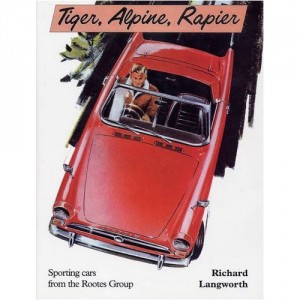 g Cars from the Rootes Group,” in my book, Tiger Alpine Rapier. But don’t pay that silly prices listed on Amazon. Use Bookfinder.com to find a cheaper copy.
g Cars from the Rootes Group,” in my book, Tiger Alpine Rapier. But don’t pay that silly prices listed on Amazon. Use Bookfinder.com to find a cheaper copy.







3 thoughts on “Harrington Le Mans: Sunbeam’s Lovely Gran Turismo”
Hi all: Just refurbishing the running gear on my 1962 Harrington Le Mans which I recently removed from my father’s garage, being parked there in 1988. The garage having gaps for wind to get through preserved the body with only a 2 inch weld to do the rest being factory original. Paid £1000 at the time; hope to get on the road this year 2022 all chrome and soft trim was stored in his loft so is perfect I have the full service history I found a pair of no wing badges on ebay for £50 recently. Last time I drove it I was 26 lol. The car is still on the to be found list. However it was the national concours winner in 1978. Rich In Yorkshire UK
The Moonstone white Harrington photo in your wonderful synopsis is my USA Promotional Harrington Le Mans (PHLM) as it appeared for the Grand opening (June, 2012) at the LeMay – Americas Car Museum. It debuted at the 1962 Twelve Hours of Sebring followed by the 1962 New York International Auto show. It was raced by Greg Vederoff on the US West Coast during the 1962 racing season. I also have the 1962 Works Sebring Alpine #41 driven by Peter Harper and Peter Pocter where they took third in class. Jan Iggbom is an automotive historical champion for maintaining the Harrington Alpine site.
–
Many thanks, caption amended accordingly. RML
As buildings can be recognised as art, as works of engineering, such as steam locomotives, can be recognised as art, so it should also be with cars.
Thank you.
Comments are closed.